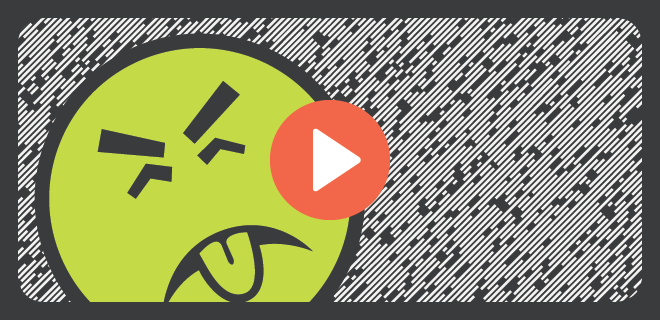
Well, well, well—look who is back in the brand safety doghouse. A new CNN investigation shows that video creative from hundreds of brands ended up next to extremist content—I was particularly rattled that messages from Jerusalem’s Friends of Zion Museum and the Jewish National Fund appeared in front of a video titled “David Duke on Harvey Weinstein exposing Jewish domination….”
Automation and scale have long been YouTube’s best friends—and they’ve certainly worked wonders for video publishers and advertisers. But similar to some of Facebook’s woes of late, YouTube has run into the limits of automation. The company’s hiring of swaths of content reviewers shows it understands this, but it seems obvious that even an army of censors couldn’t tackle the amount of videos being constantly uploaded to the platform.
YouTube’s brand safety issues aren’t new at all—for as long as YouTube has been showing ads, people have been taking screenshots of major brands running next to “questionable” content. The risks of user-generated content have long been bellowed in advertising trades and at marketing conferences, but YouTube’s enormous scale and relatively low entry point in terms of pricing encouraged advertisers to look the other way.
However, the atmosphere has become so toxic that the scale is no longer worth it—brands with the ability to make large buys in more brand-safe environments will pull their spend for fear of being publicly outed.
To counter, YouTube has introduced more restraint in where they serve ads, but this CNN investigation shows that effort is cursory at best. If YouTube was to really crack down on where ads appeared, it would seriously affect the bottom line, possibly forcing a hike in CPMs. Thus a major advantage over other platforms and video content providers disappears in a blink.
I also wonder if these brand safety concerns will really impact YouTube’s bottom line because its inventory is relatively inexpensive—especially compared to buying digital video from a major broadcaster, for which you’d have to pony up a large sum (if you can find available inventory). Buying cheap video from other sources such as ad networks holds risks such as creative ending up in tiny banners on websites that only bots visit. Atrocious content and all, YouTube remains the best digital video play for many smaller advertisers.
A Solution in Context
Potentially, some kind of contextual intelligence tool boasting AI (or really, machine learning, but AI is a catchier phrase) could be employed to minimize brand safety issues. These have become advanced enough to scan videos (on multiple layers) for offensive content or something particularly sensitive to a brand (e.g., blocking an airline from advertising on a video of a plane crash).
As a friend mentioned, Google has a video contextual analysis tool, but I’m going to guess they need to up the juice with a specialized tool for advertising (e.g., Grapeshot). Offering YouTube advertisers on the platform more contextual control and the aura of tech-managed brand safety might be enough to sway the brand safety tide.
Both publishers and advertisers are looking into this kind of technology to improve brand safety experience; as YouTube is a publisher at heart, it should be making the same kind of investigations. And of course, it’s got the capital to actually buy one of these AI-supported contextual intelligence providers. A smart acquisition here could give YouTube some good press and allay the fears of major advertisers.
But no blocking or intelligence tool like that is perfect—there will still be scattered brand safety incidents and damning screenshots. Brands that want access to YouTube’s reach, scale, and targeting capabilities will have to accept that risk, but they can certainly demand YouTube minimizes it.
Major brands can make a more dramatic plea by closing their wallets. That may not hurt YouTube’s bottom line significantly, but could take a swat at the platform’s reputation, which in turn could lower CPMs. It really seems YouTube’s best play here is to embrace contextual intelligence technology—as loudly as possible.